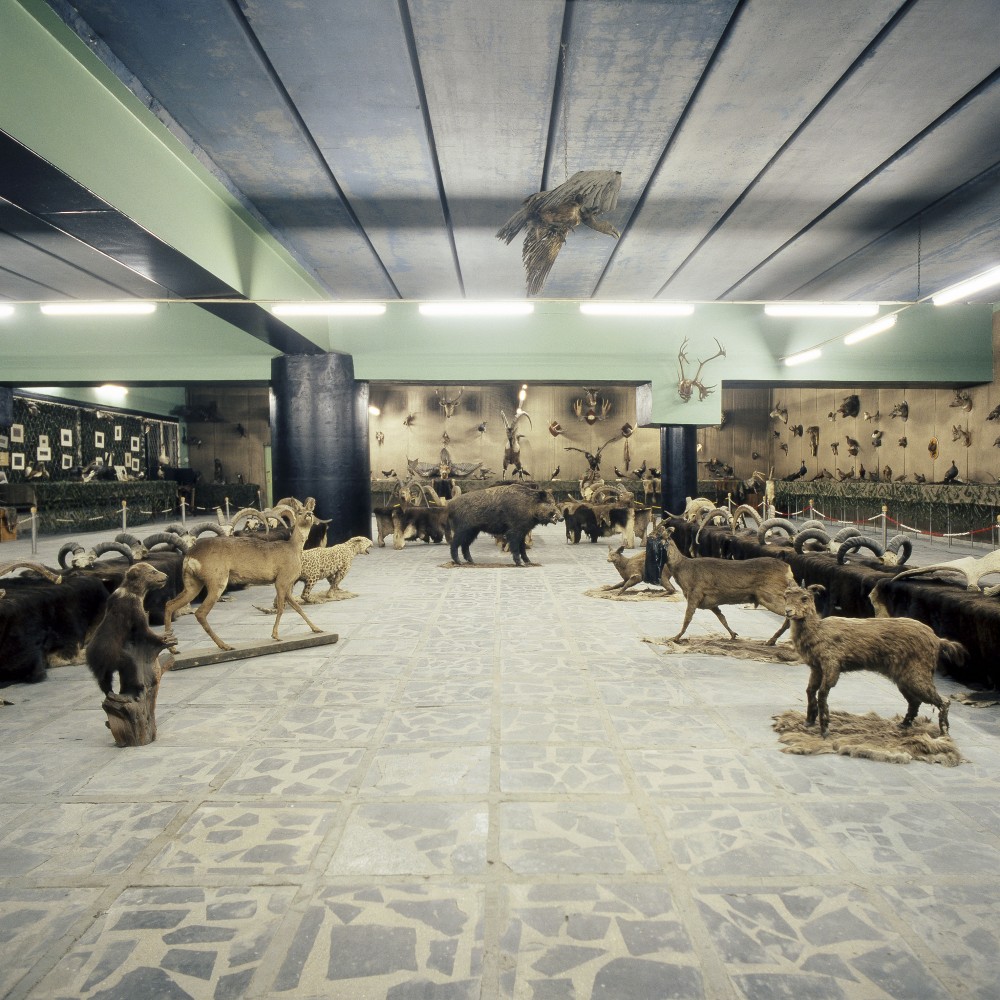
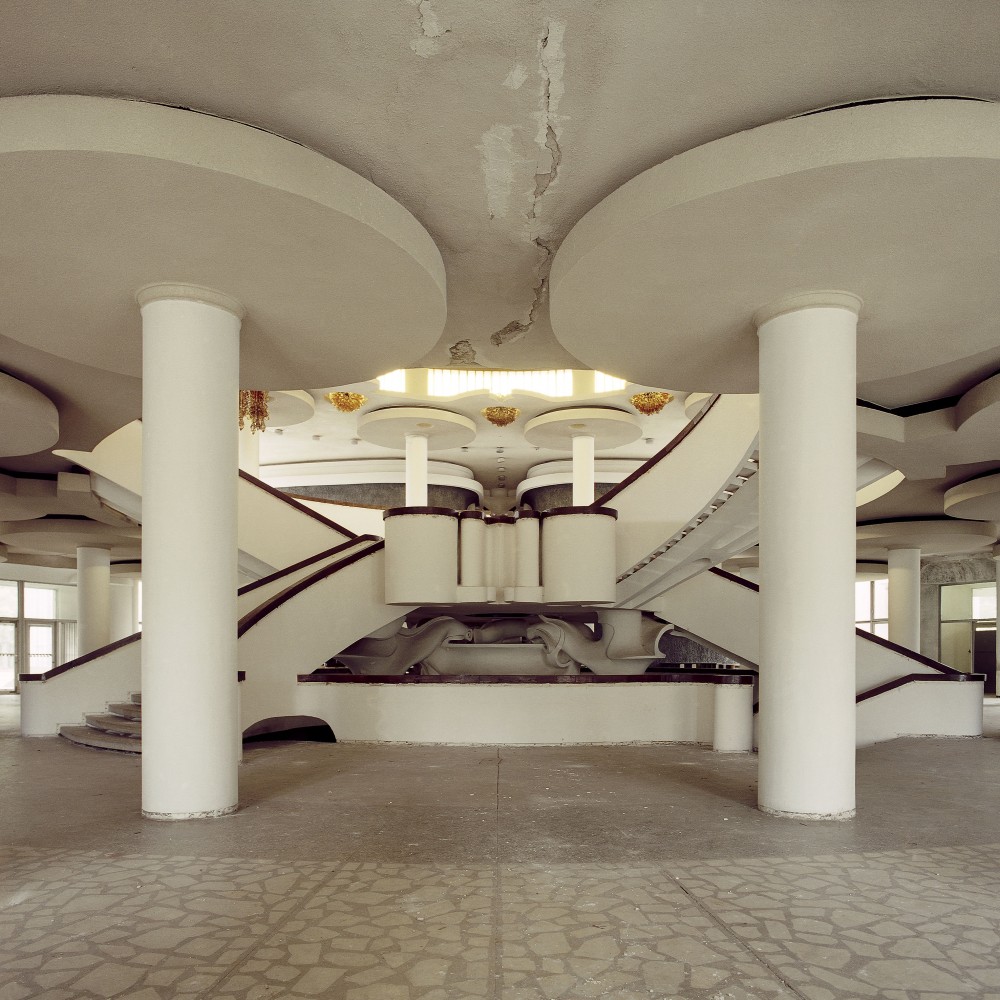
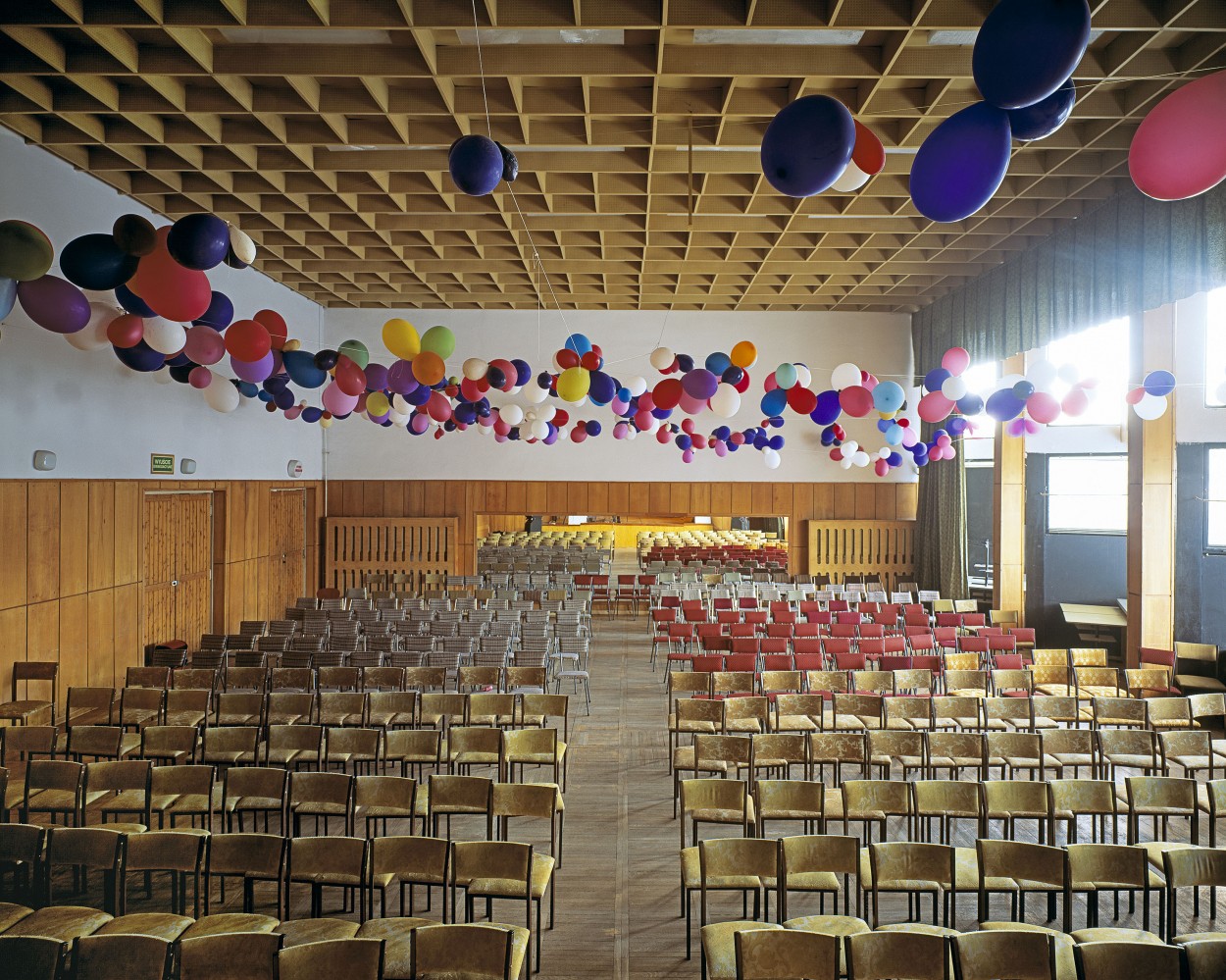
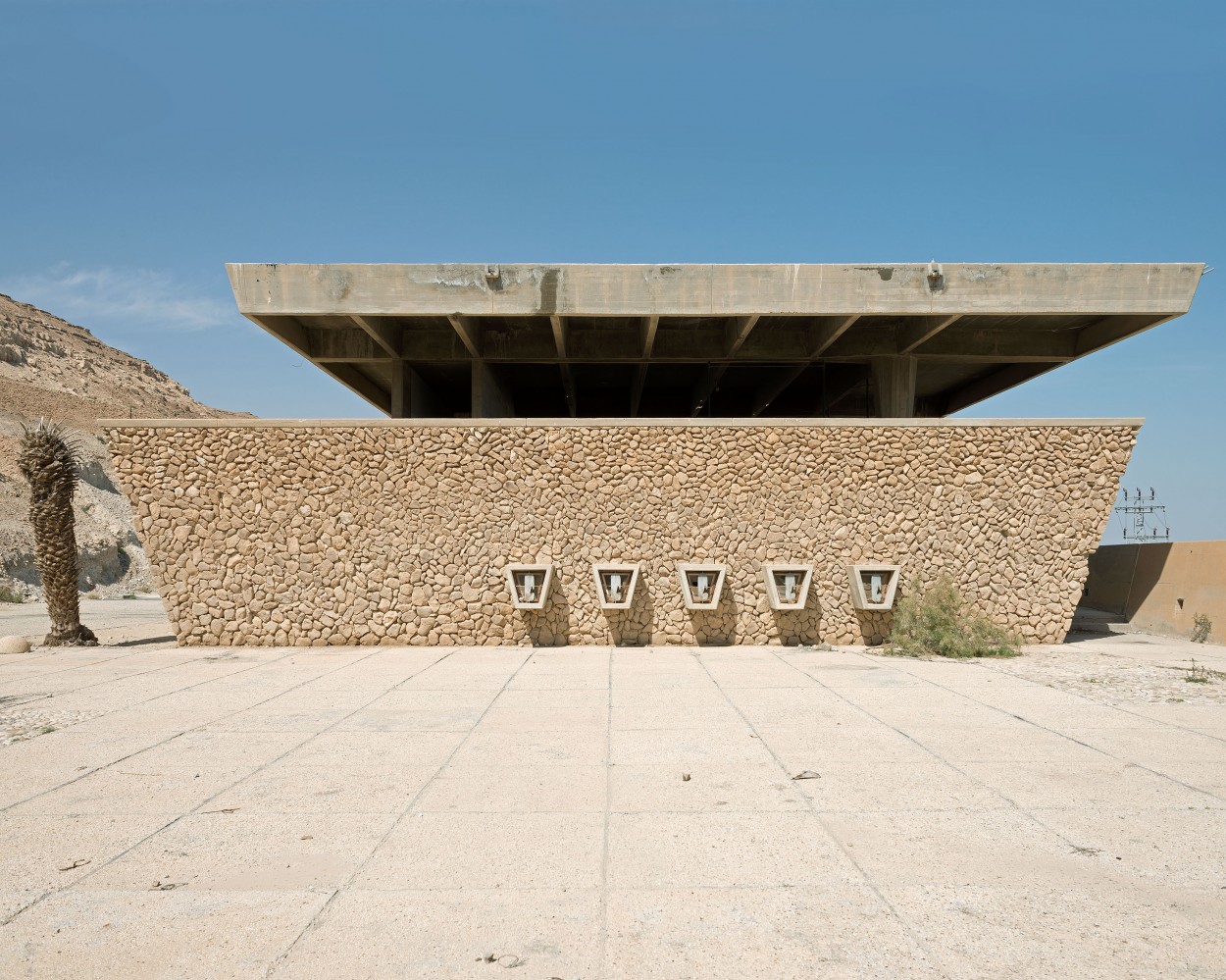
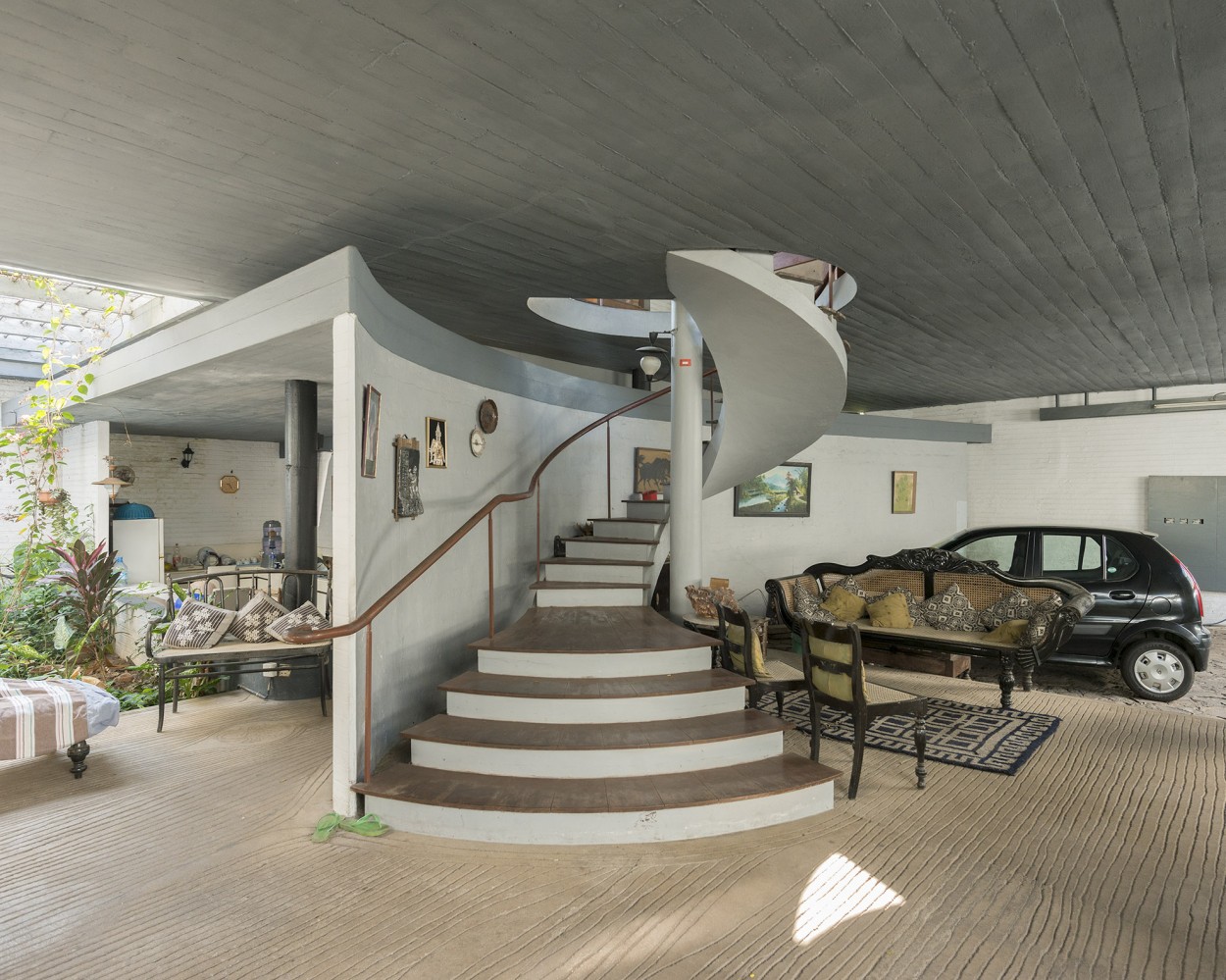
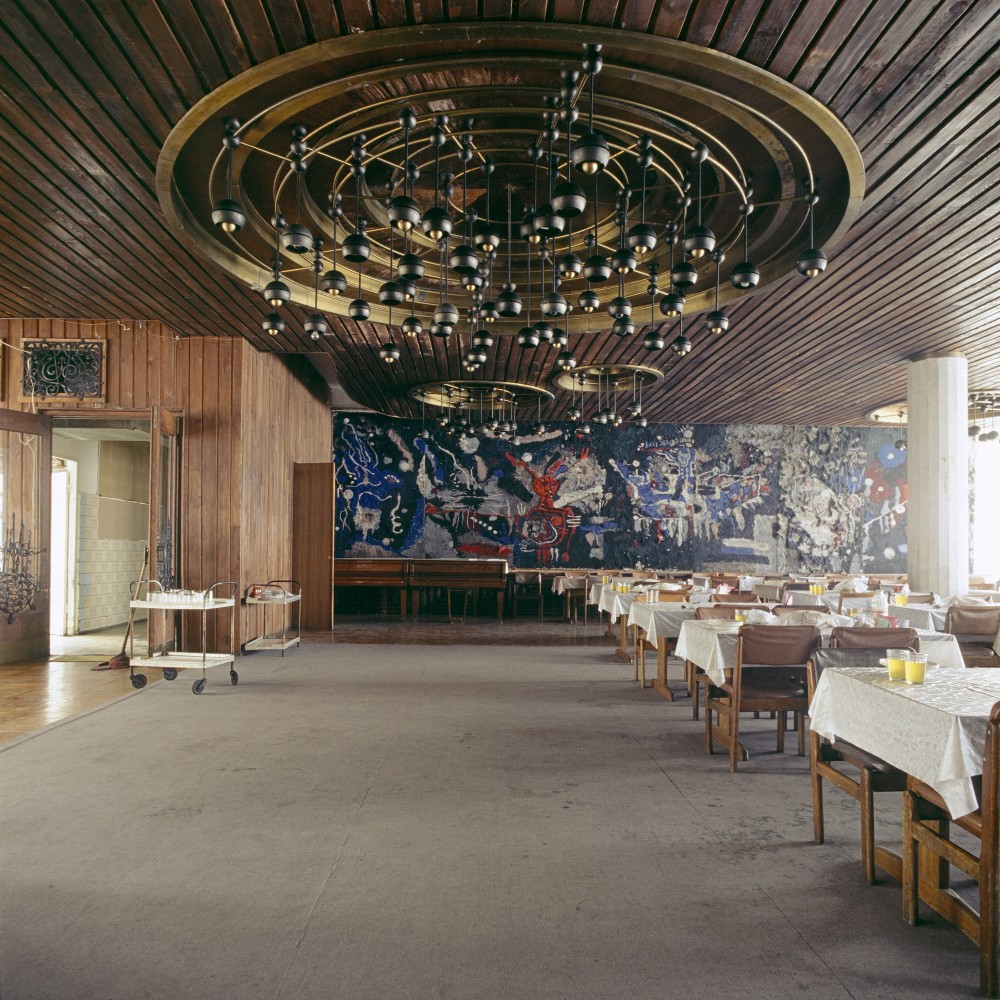
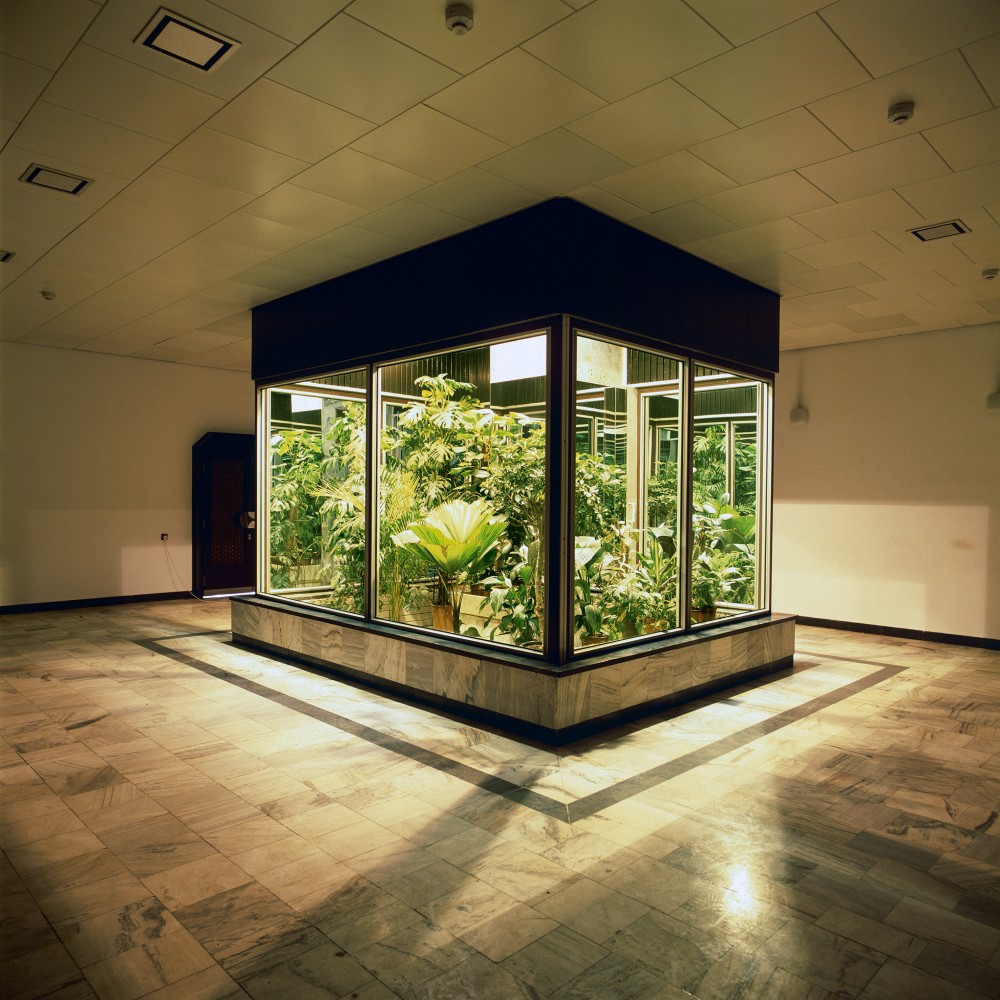
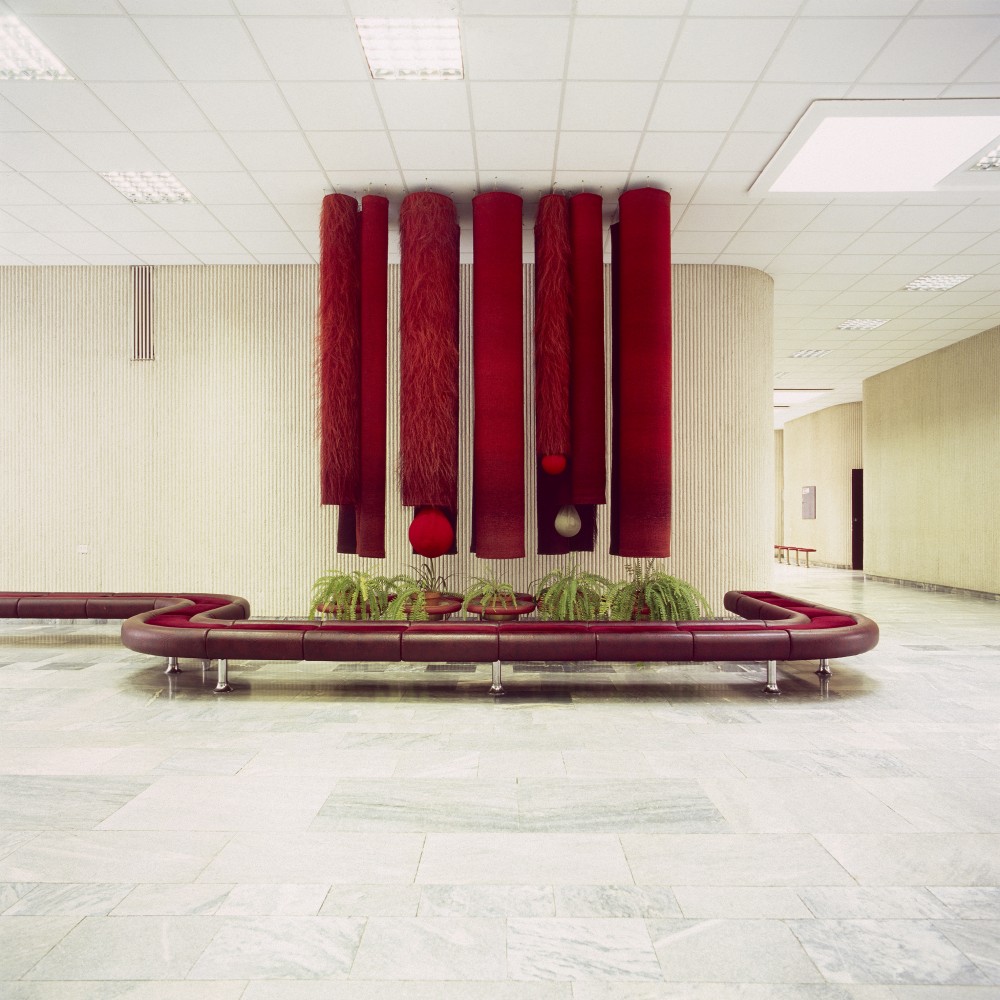
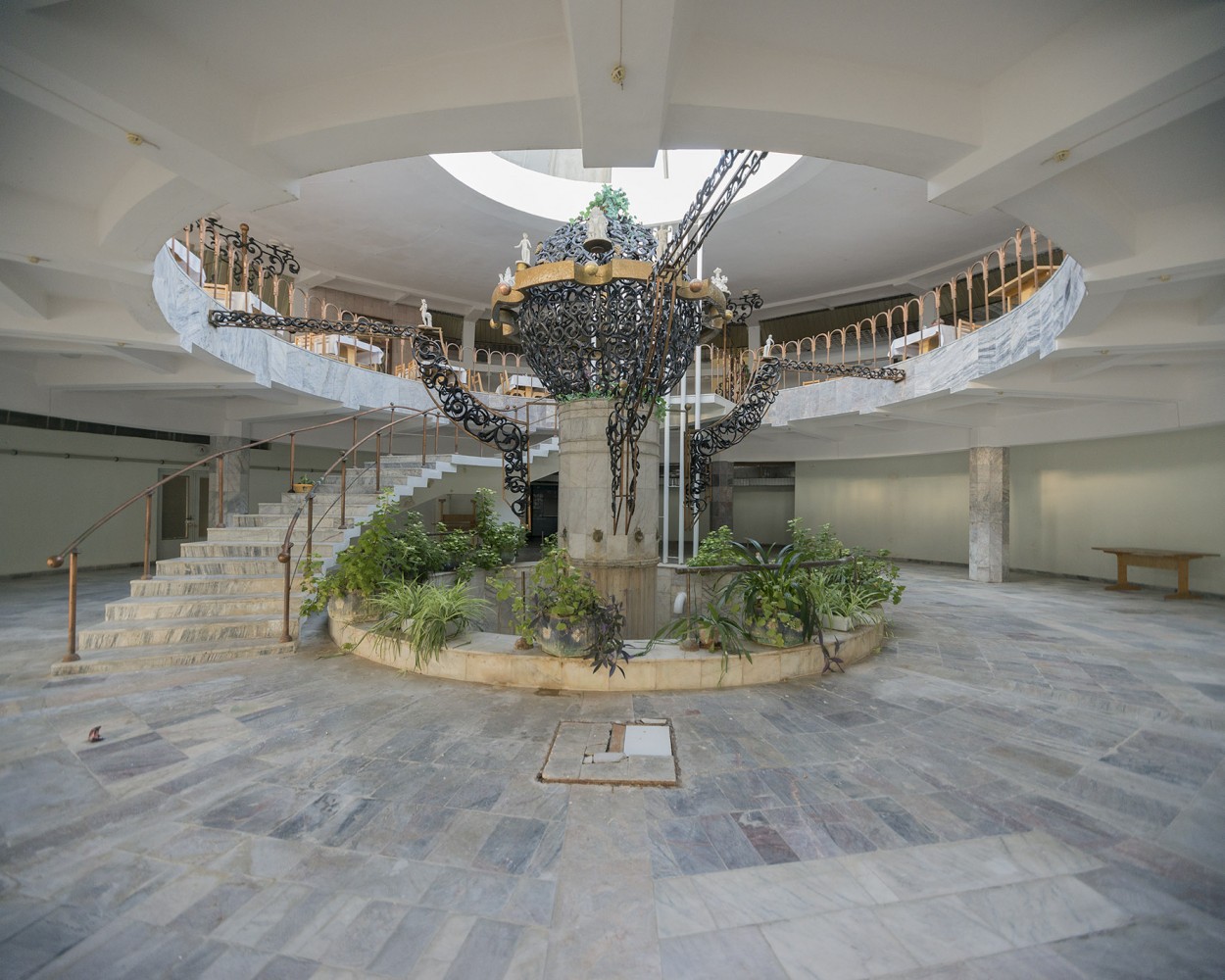
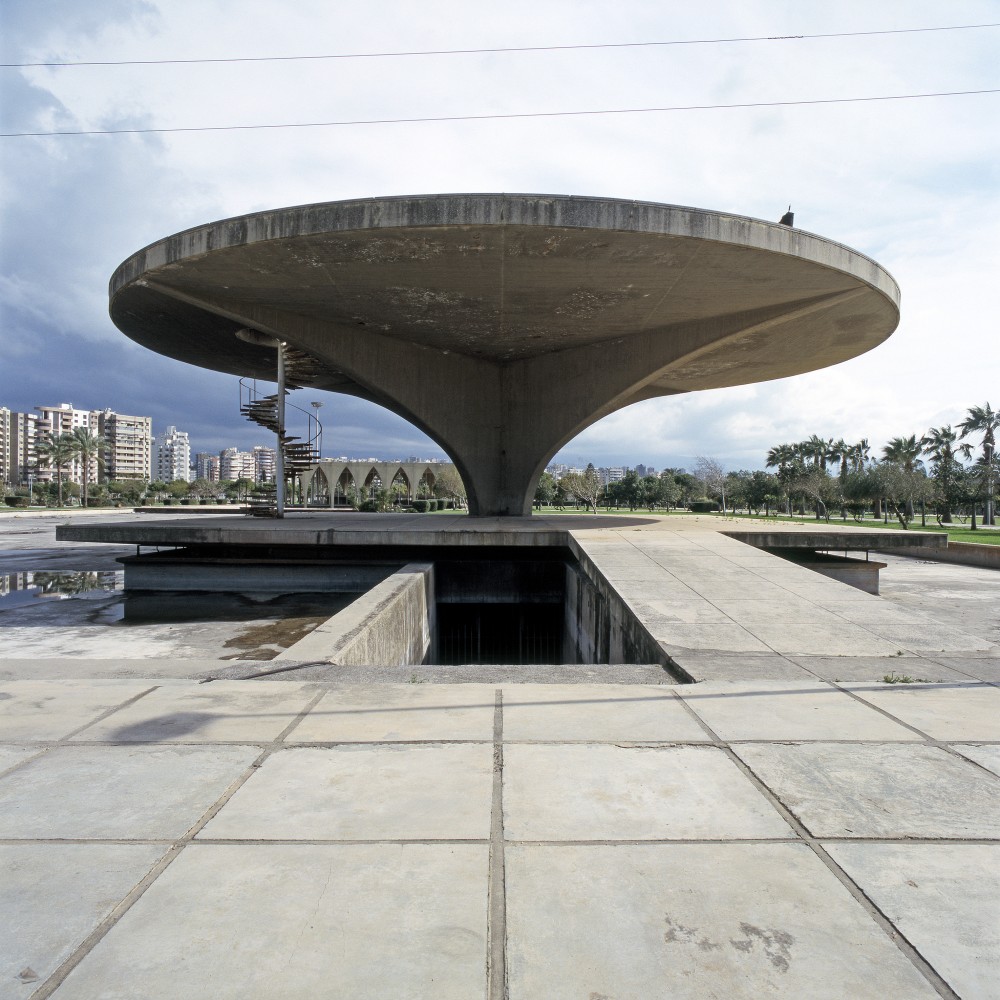
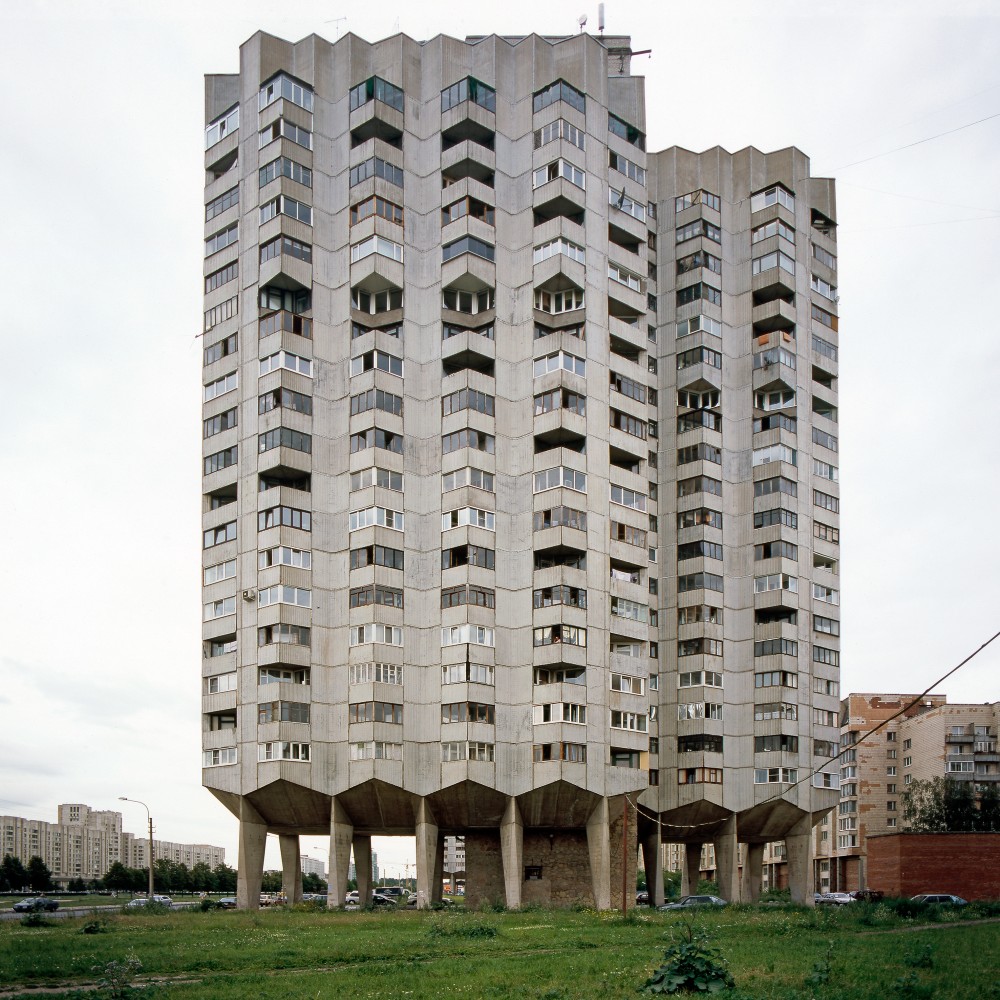
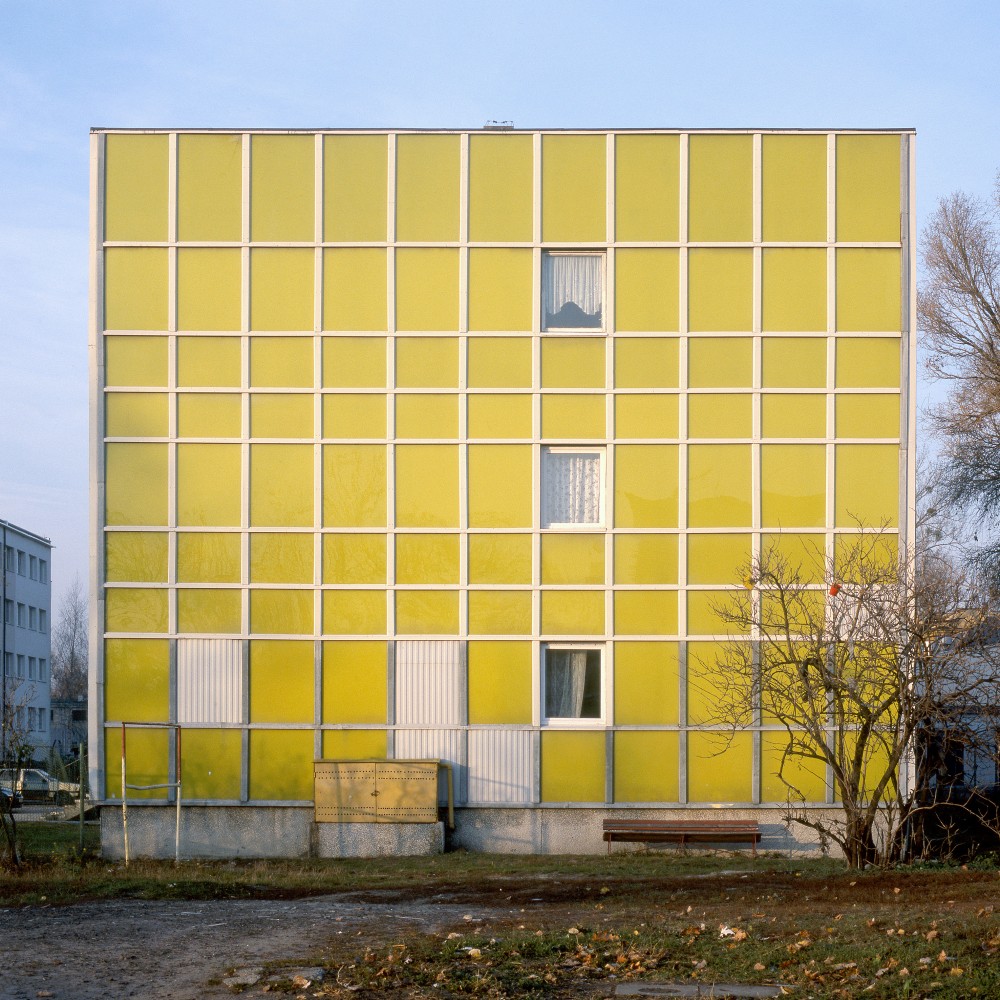
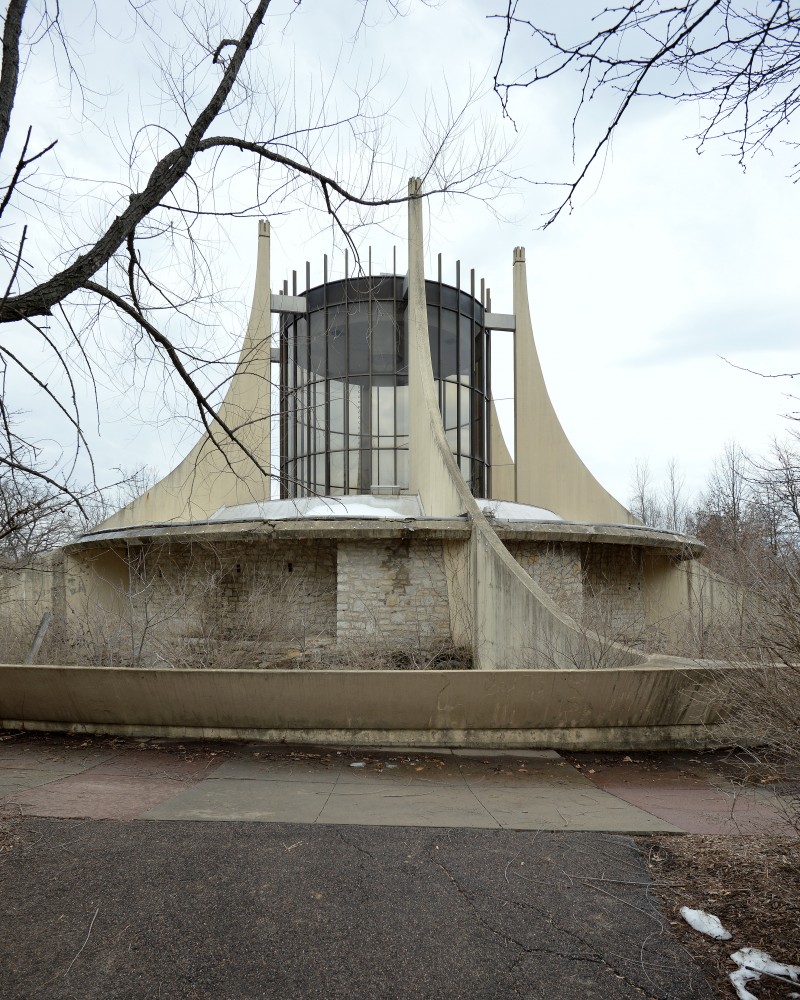
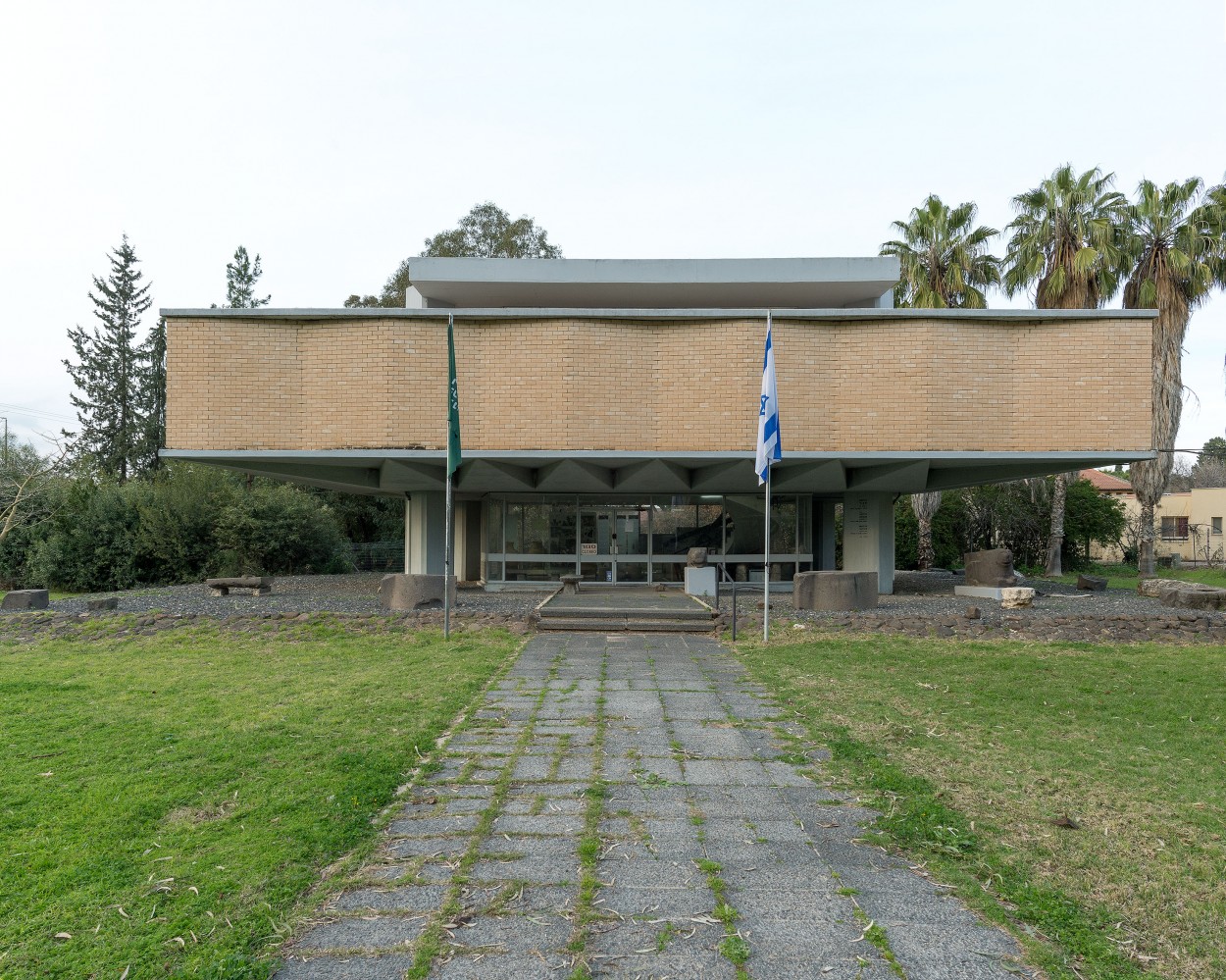
Nicolas Grospierre is one of the most outstanding contemporary photographers, whose pictures from the two series “Modern Forms” and “Modern Spaces” were displayed for the first time in Poland during an exhibition in the Fort Institute of Photography in 2019. Both series had already been published as albums and had been shown abroad, however they were not well known to a Polish audience.
The photos shown at the exhibition were taken in Europe, Asia, both Americas, the Middle East, and Australia. They comprise both iconic modernist buildings such as the Gateway Arch in St. Louis, as well as marginal—if equally interesting in their form—relics, such as the now-demolished balneological hospital in Druskininkai.
The vision pictured by Grospierre is thrilling and mad, and at the same time it goes beyond conventions of presenting modern architecture. His photos are linked through their solid geometrical shapes, the technical solutions they offer to a particular construction problem, or even the color of detail used to finish a given building.
For me, modernism, and architectural modernism in particular, is the embodiment of one of the greatest ideas in the history of mankind—progress. Alas, the idea failed, but this failure has taken on a certain nobility characteristic of fallen ideals. This moves me considerably on the aesthetic and the ideological level. My works can be received as a form of a critique of modernism, but I must emphasise this is not a critique that comes as a result of reluctance. It is, rather, a contestation, an attempt to demonstrate what had gone wrong. For I can identify with ideas of progress, I believe in them and I long for them.—Nicolas Grospierre
Nicolas Grospierre (born 1975) is an architecture photographer, and an artist who uses photography as his creative tool. Grospierre grew up in France and has lived in Poland since 1999. Before picking up photography, he studied political science and sociology in Paris and London. As a photographer, he is mainly interested in documentary projects and conceptual art. His works often revolve around the issues of collective memory and the hope placed on modernist architecture—especially today when utopian concepts that used to fuel it have lost their meaning and power. In his conceptual works, Grospierre creates the setting for a game he plays with his audiences, pulling them closer with attractive, almost sensual images and installations.






